Manicure with ordinary varnish: from choosing a design to creating
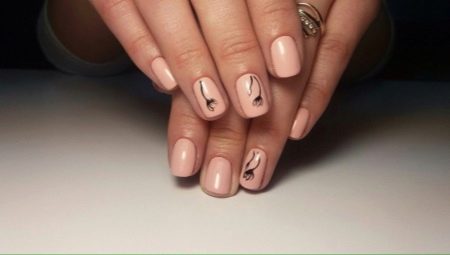
A beautiful manicure can be done not only in the salon, but also at home, and with your own hands. To do this, just use regular nail polish. If all actions are performed correctly and a creative approach to the matter, the manicure can turn out to be unusual and will remain in its original form for a long time.
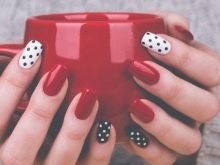
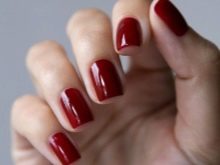
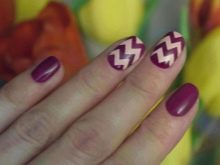
Features of manicure
When a master paints a client's nails with precise, verified movements in a salon, this lesson seems completely uncomplicated. But it is worth trying at home to make a manicure with an ordinary varnish for yourself, and this can turn into a real hassle. The left (and for some, the right) hand does not obey and makes strange crooked strokes, the fingers end up in blots, and on the nail plate itself, the varnish, in general, goes in bubbles.
With regular exercises to create a manicure at home, these problems become less.
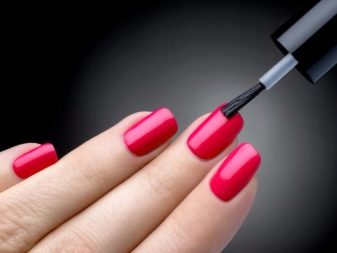
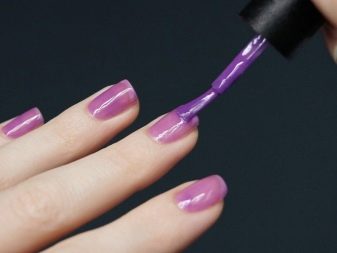
Advantages and disadvantages
The use of ordinary varnish, in comparison with analogues of a later origin, has its own advantages and disadvantages. Among its advantages are the following:
- such a varnish is relatively inexpensive;
- no special equipment is needed to dry ordinary nail polish;
- a new manicure can be performed even every other day, creating a new design as you wish;
- with the use of such a tool, the nail plate almost does not suffer, since the varnish does not adhere to it, which means that the thinning of the nail does not occur.
All this has its downside:
- in comparison with more "advanced" analogs, such a varnish serves for a matter of days;
- Many common varnishes have an unpleasant odor due to their constituent components.
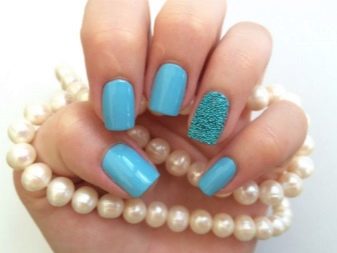
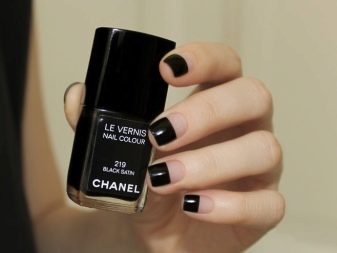
Preparation of tools and materials
To do a manicure yourself, you cannot do without a set of certain tools and materials.
Prepare:
- ordinary varnish (or several, of different colors);
- means for a transparent base coat - a primer;
- means for fixing the colored coating;
- nail polish remover;
- hand cream;
- cotton pads and cotton swabs;
- brushes;
- antiseptic, such as an alcohol solution for disinfection.
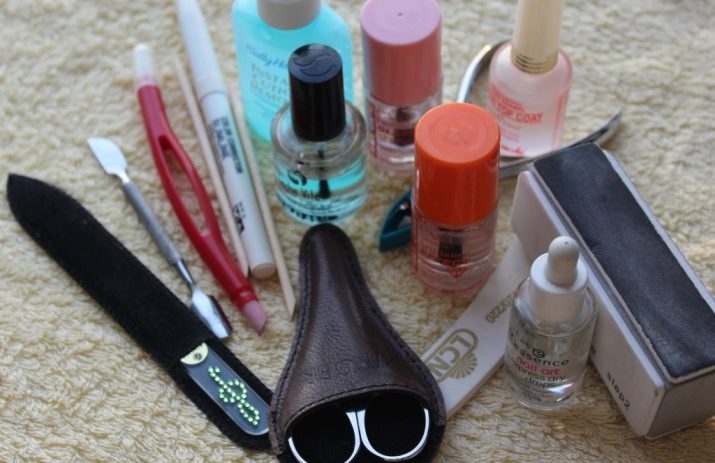
Varnish application technique
You need to do manicure after a long time after leaving the bath, shower, or after other contact with liquid. Even if you wipe your hands well, moisture remains in the pores for several hours. It can be bad for the end result.
First you need to properly prepare the nails themselves for decoration. It is necessary to erase traces of previous staining from them and give them the shape that you like best. They can be square, oval, pointed, have rounded corners, and so on.
If the skin around the nails requires processing, you will have to do it too: make a bath and soften the cuticle, put it in order.


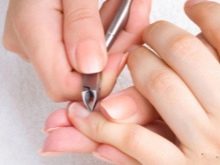
In order for the varnish to adhere tightly to the surface of the nail, it is necessary to grind and polish the plate itself. To do this, you need a nail file and a buff. Then wipe off the dust left after processing from the nails and degrease their surface.
Getting started staining, you need to make sure that the elbows have support. You can not paint your nails, keeping your hands on weight. This can ruin the whole business, and you have to start over.
First of all, the base is applied. The base transparent (or white) layer will allow you to better connect the usual varnish with the intended surface and will not allow it to be absorbed inward, making the nails yellowish in appearance after removing the coloring agent.

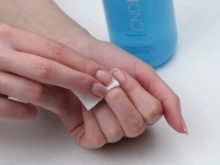

You need to apply a colored layer on them starting with the little finger on the hand that is the working one. That is, right-handed - from the right hand, and left-handed vice versa. Moving from pinky to thumb will help you not to spoil the already applied coating when painting the next nails on the hand.
It is better to warm the bottle with varnish in the palms of your hands., you can shake it, but it is not recommended to do it too much: then air bubbles may form inside, which will subsequently warp the varnish on the painted surface.
To accurately paint your nails, the brush must be removed from the bottle by running one side of it along the neck: then the coloring agent will not be too much and it will not flow where it is not needed.
You need to paint correctly: after making a stroke, first from the middle to the edge, and then back - towards the hole. After that, go to the sides and finally run the brush along the end of the nail to seal it.

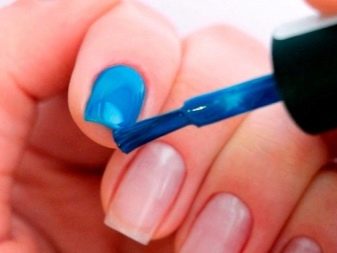
If there is no experience and there is a risk of smearing the skin or you want the nail to look more graceful and longer, you can not bring the brush to the edge on the sides of the plate at a distance of about a millimeter.
After waiting a little, apply a second layer of varnish, and after drying, fix it with a finishing transparent layer, making the same movements as when distributing a conventional coloring agent. The top coat will give the manicure a nice glossy shine.
In order for the manicure to last longer, for several hours after the completion of the coating procedure, you must not have contact with water. Therefore, ordinary women's household chores will have to be postponed: do not wash dishes, do not wash floors, and the like.


Precautionary measures
Even if manicure is considered a harmless process, precautions will not hurt. You need to choose a convenient place for such an activity. All items necessary for work, including a bottle of varnish, should be located on the surface so that they cannot be touched, turned over or shaken off the table.
It is advisable to keep the window open, especially if the strong smell of acetone is too irritating to the respiratory system.
When putting beauty on the nails, it is better to make sure that children do not spin around. They don't need to be in contact with nail supplies.
If the varnish itself gets into the eye of a curious child, which also sometimes happens, you should quickly rinse it with water or tea leaves, although it is possible that after such adventures you will still have to see a doctor.
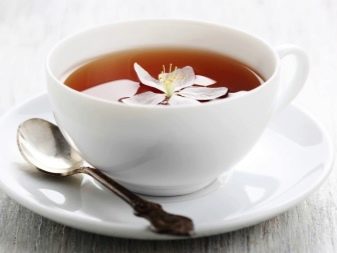

FAQ
In the course of self-creation of a manicure, all sorts of difficulties often arise.
What to do if it is dry?
It so happens that the varnish is used irregularly. It thickens, hardens, and even the bottle itself does not open anymore, because its contents have dried on the neck.
To open the bottle, you can put it under hot water for a short time so that the lid falls under it. If this does not help, hold the bottle under the heated liquid for half a minute. You can try to immediately unscrew the cap, but so that water does not get inside the bottle.
You can just put the bottle upside down in a glass of hot water for five minutes. After that, the bottle should be wiped and again try to move the upper part of the bottle along the thread. To make this easier, you can wrap an elastic band tightly around it. Then it will be more convenient to wrap your fingers around the lid.
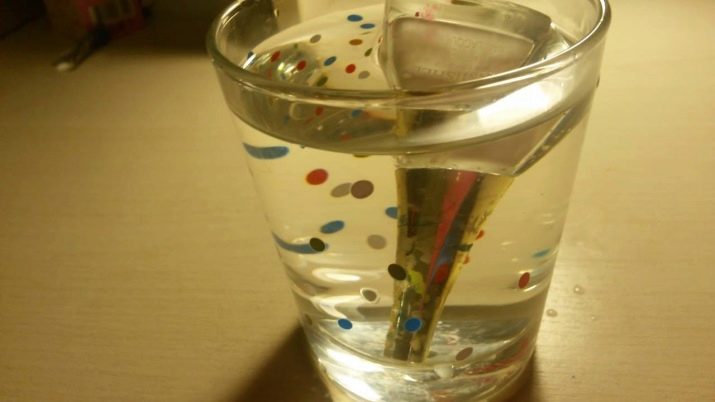
You can also wet the base of the lid with solvent using a cotton swab. Nail polish remover or acetone will “eat up” the dried varnish, and it will be easier to open the bottle.
It is also convenient to restore the fluidity of the varnish itself with the help of hot water, although in some cases it is possible to make it liquid only thanks to the solvent. A large amount of this agent does not need to be added immediately. It is better to act in stages, achieving the desired varnish consistency.
There are also special products on sale that can be used to dilute the coloring agent. Such thinners themselves look like clear varnishes. You can use them based on the instructions for use.
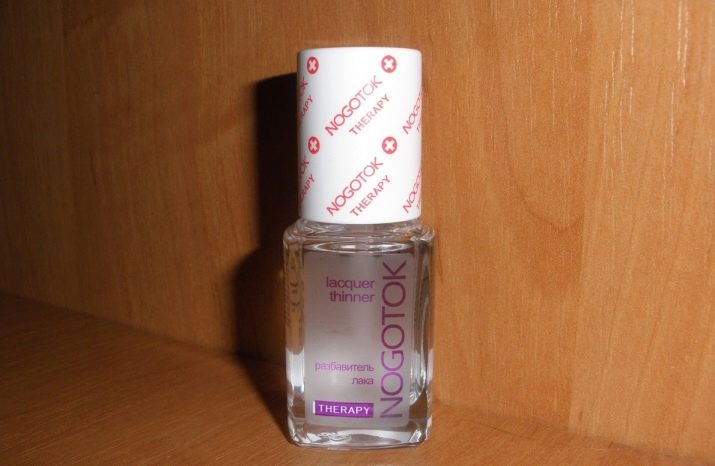
In order not to have to deal with the "revitalization" of dried varnish, it is better just not to create situations for it to dry. Do not store such bottles in the refrigerator, as well as in a nightstand near a heating radiator or under a window. Both too high and too low temperatures are equally bad for the colorant compositions. Find a cool, dark place for the bottles.
After using the nail polish, wipe the neck of the bottle with nail polish remover. This will prevent the lid from sticking.

What if it doesn't dry?
The problem with conventional varnish is that it dries slowly. It takes ten to twenty minutes to wait for each layer to set securely.
So that you do not have to wait long, you can use special sprays or liquids that are distributed over the nails with a brush. This allows the varnish to dry in just a minute.
You can apply a drop of vegetable oil to your nails within a couple of minutes after applying the varnish. This speeds up the drying process in half.
You can even use a regular hair dryer. It is turned on without heating. To prevent the varnish from warping, you should not bring the device too close to your fingers.

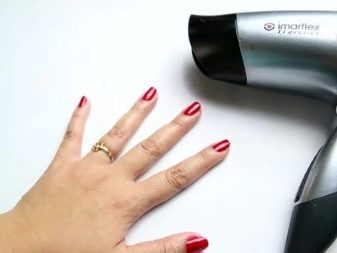
How to erase?
Sometimes, when applying varnish to nails, it bubbles. This may be due to the ingress of water into the coloring composition, or, perhaps, the decorative agent simply has an expiration date. Then the varnish will have to be erased and reapplied. You can use a cotton pad soaked in a special liquid to remove it.
Some make a nail corrector out of handy tools. A piece of foam rubber rolled into a spiral is screwed into a small bottle of nail polish remover. It is enough to stick your finger into the foam rubber soaked in liquid. After that, the varnish will be removed with a gentle movement.
It often happens that the varnish does not rub off the skin around the nails.This can happen due to the inexperience of the girl who paints her own nails or due to the use of various devices when creating drawings and decorative prints on the nails.
To wipe the blots from the skin, using a nail polish remover. You can soak a cotton swab with it and rub your fingers. You can use a special corrector, the rod of which is impregnated with a nail polish remover.
You can also use a flat brush that is moistened with solvent and passed over the skin. After that, wipe the brush on a lint-free napkin and repeat the procedure until your fingers are clean.
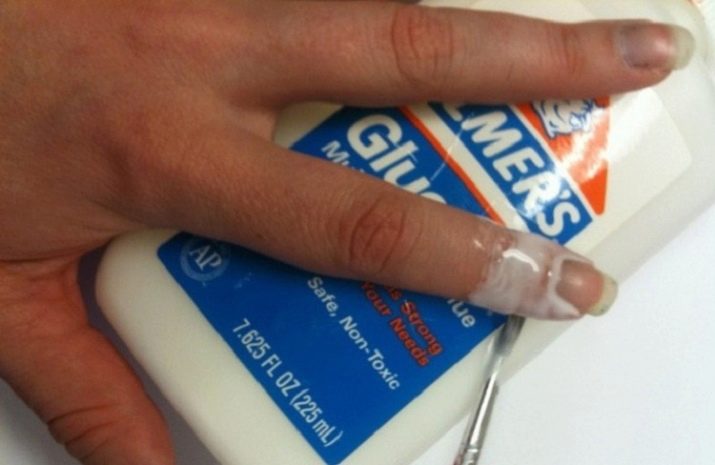
Design ideas
Ordinary varnish allows you not only to accurately paint your nails at home, but also to make an unusual design on them.
An interesting option is to use a newspaper. First, the nails are covered with a base coat, then white varnish. When it dries on the nails, pieces of newspaper with letters are moistened in alcohol for ten seconds and then firmly applied to the nail plates. Cover with transparent varnish on top.

With a toothpick, you can easily make a pattern on painted nails. To do this, take a varnish of a contrasting color to the main color and apply dots with a stick. You can distribute them in different ways over the surface. For example, at the very edge, make a lot of them, gradually reducing the number towards the nail hole.
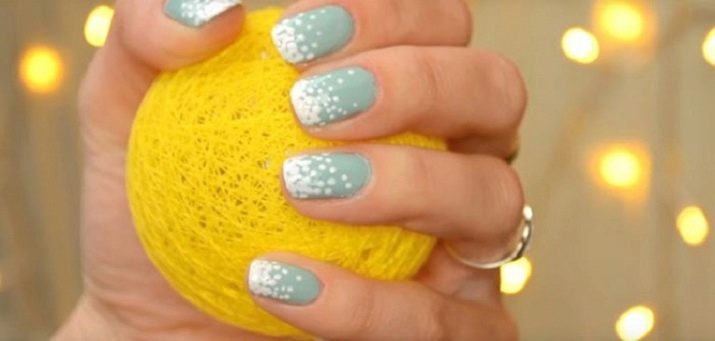
You can create a transition effect from one color to another. To do this, several strips of varnish of different colors are applied in a row to an ordinary kitchen sponge. The skin around the fingers must be closed, for example, by covering it with PVA glue or wrapping it with cling film (it remains to make a hole in it for the nail). You can now make prints, then cover your nails with a clear coat and remove the protectors from your fingers.
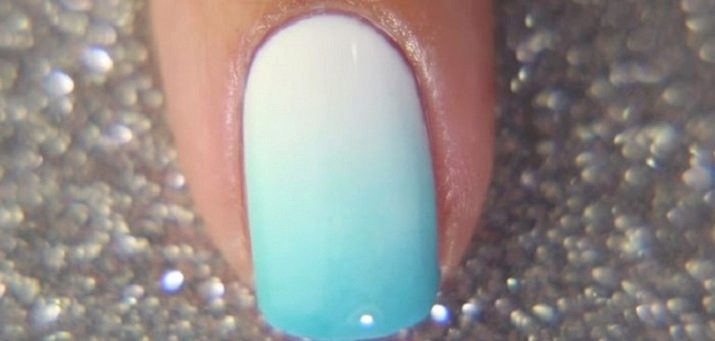
See the next video for manicure design ideas with ordinary varnish.








